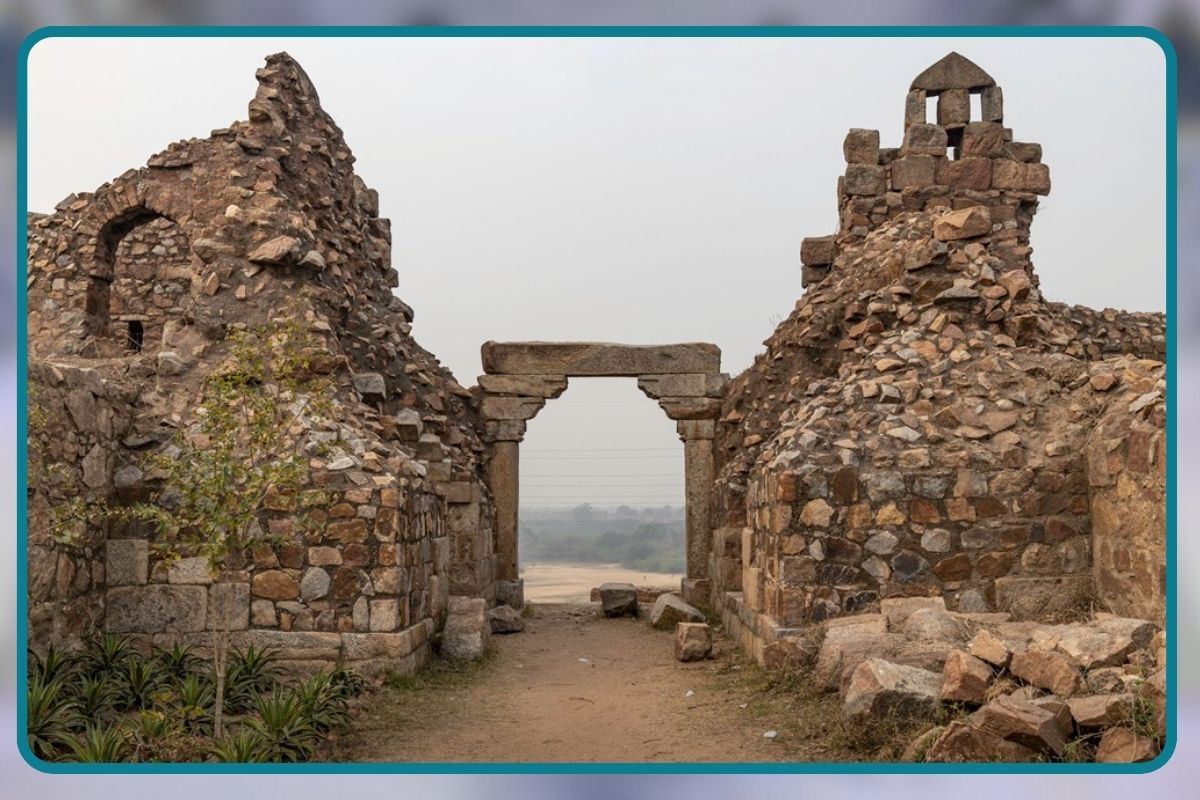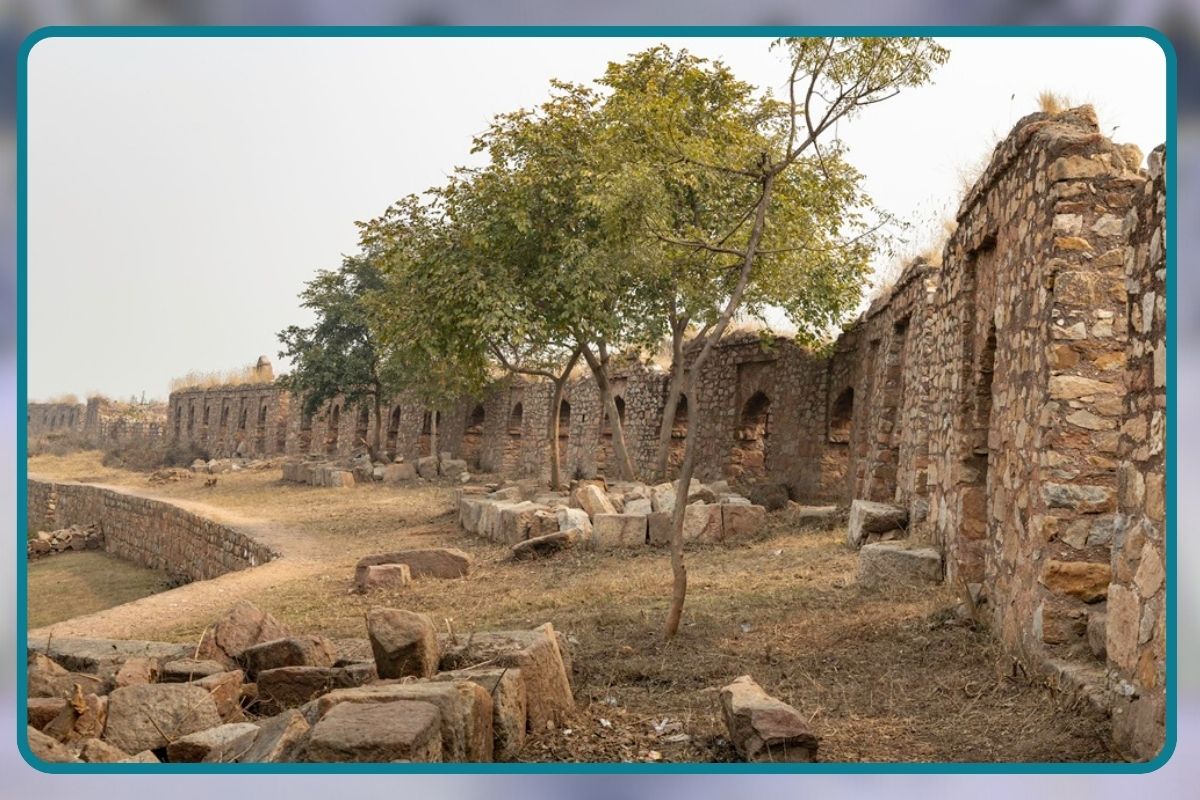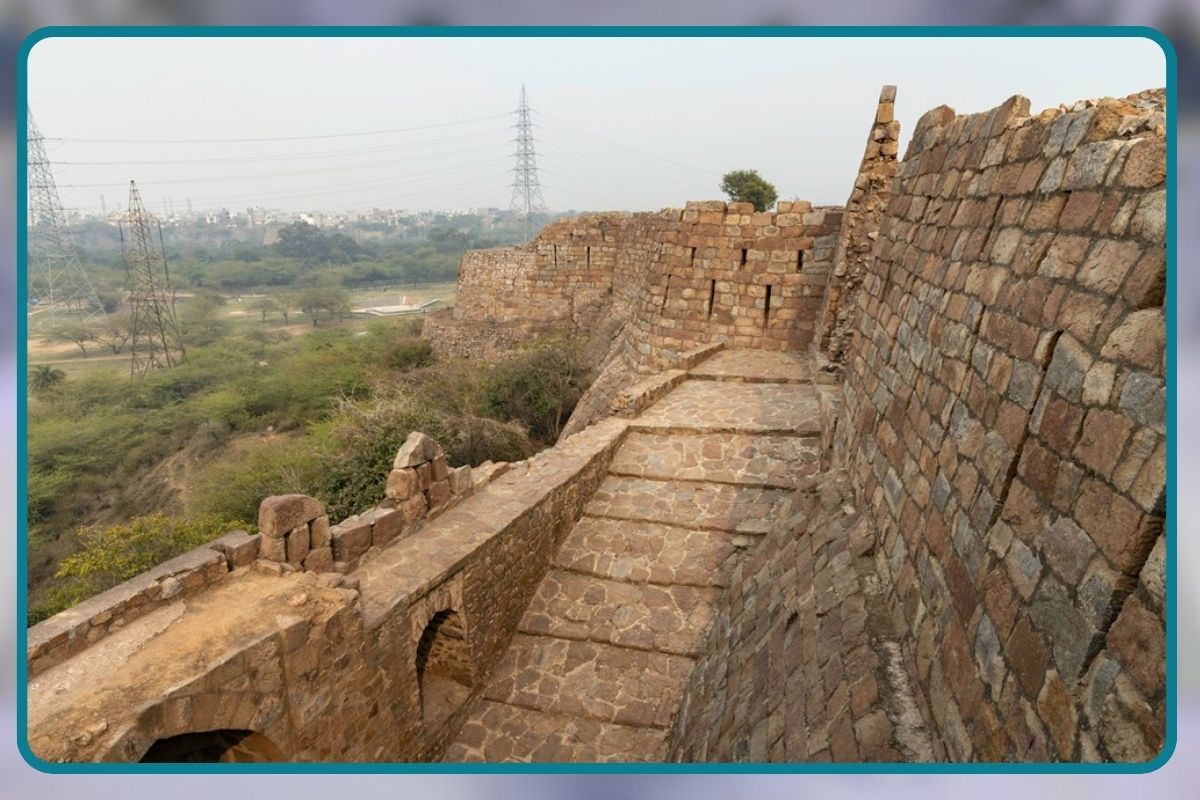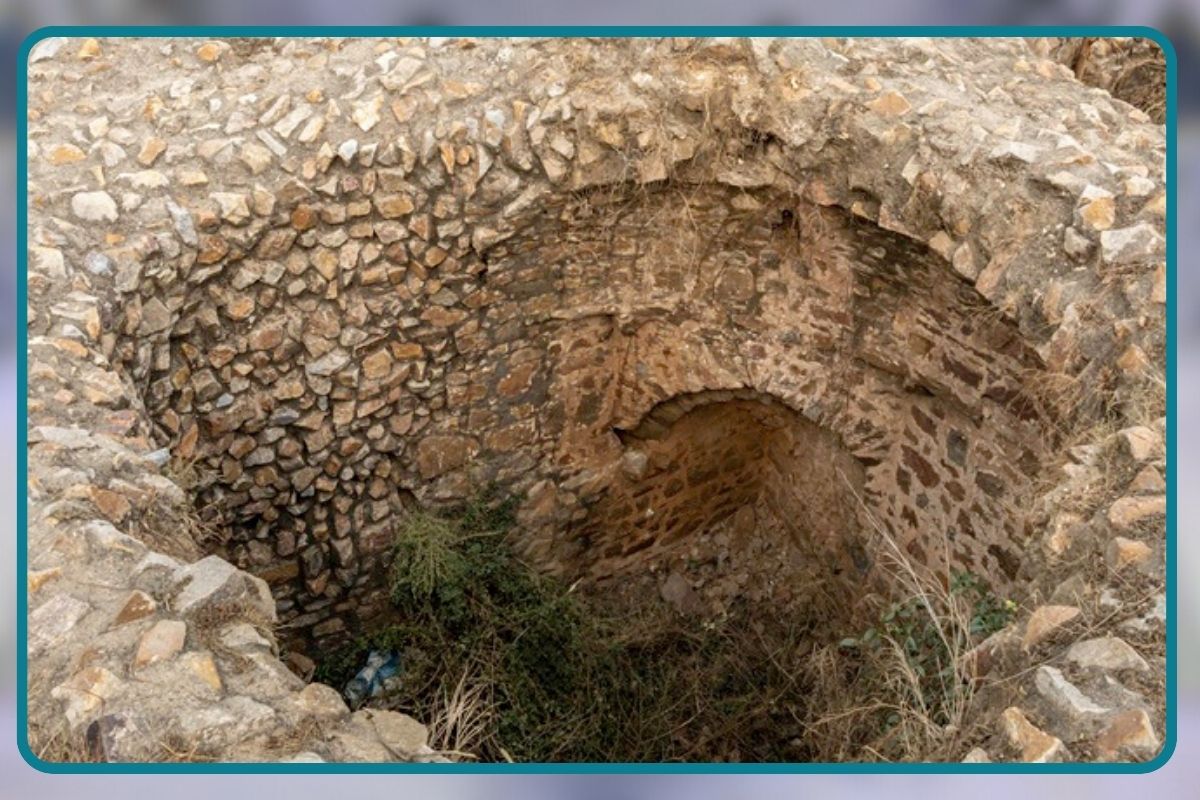Adilabad Fort stands in Delhi’s southern edge, a medieval guardian born from dreams and defenses, now silently holding dilemmas of memory and neglect within its ancient walls. Step into the early 1300s, when Delhi trembled under the weight of Mongol threats and the restless ambitions of Sultan Muhammad bin Tughlaq. The city was not merely a capital but a kingdom caught between survival and grand visions, shaped by the unpredictable mind of Ghiyasuddin Tughlaq’s son. Muhammad bin Tughlaq had already created Jahanpanah, the ‘Refuge of the World’, a vast defensive network linking older forts like Lal Kot and Siri with massive protective walls that promised safety to a vulnerable population.
Within this ambitious framework, the Sultan commissioned the Adilabad Fort, a lesser but significant stronghold positioned near the imposing Tughlaqabad. Unlike its grander neighbour, Adilabad was built for practicality rather than show, intended as Muhammad bin Tughlaq’s personal fortress within the protective belt of Jahanpanah. The design borrowed heavily from Tughlaqabad’s architectural principles, including thick fortified walls, robust bastions, and heavily defended gateways, although it was constructed on a more intimate scale.

The structure emphasised function above all else, featuring protective stone barriers, observation towers, and strategic staircases ascending to its hilltop location. A causeway once connected Adilabad to Tughlaqabad, but time and Delhi’s expansion have erased this link. Like many of the Sultan’s ventures, Adilabad never attained the strategic importance he had envisioned. Instead, it became a quiet sentinel, blending strength with mystery, guarding the southern approaches to a city forever caught between its history and its future, watching empires rise and fall from its stone perch.
Ruins and Remnants: Adilabad’s Story through the Centuries
Centuries passed, dynasties crumbled, and the Tughlaq empire faded into memory. Adilabad Fort declined gradually, not through dramatic battles or devastating sieges, but through quiet neglect as power shifted elsewhere. The royal palace that once stood proudly within its walls deteriorated slowly, its legendary thousand pillars reduced to scattered fragments and whispered stories. Today, the fort’s outer walls remain its most striking feature, crowned with bastions and battlements that continue to survey the surrounding landscape as though still expecting danger.
Within the fort, nature and history coexist in harmony. Manicured lawns and tree-lined paths demonstrate the Archaeological Survey of India’s ongoing care for the site. Flowering plants have replaced royal processions, while military personnel from nearby installations use the grounds for morning exercises, becoming part of the fort’s contemporary narrative. The surviving gates preserve their own histories. The south-east entrance, flanked by ancient guardhouses and weathered stone arches, welcomes visitors today, while another gate remains permanently locked, concealing whatever secrets lie beyond its threshold.

Climb the worn stone steps to reach the bastions and experience an extraordinary view: modern Delhi’s skyline collides with wild scrubland and the marble dome of Ghiyasuddin Tughlaq’s tomb, creating a panorama both chaotic and timeless. Cricket matches echo through the ruins now, children’s laughter filling spaces once reserved for soldiers and courtiers, blending modern joy with ancient silence in unexpected harmony.
Adilabad Today: Relevance in the Rush of Modern Delhi
Why should a nearly forgotten fortress matter to contemporary Delhi? Adilabad Fort represents far more than crumbling walls and faded glory. It serves as a living connection to the city’s medieval foundation, functioning as an accessible outdoor museum embedded within everyday neighborhoods. The fort demonstrates remarkable endurance, proving that even overlooked history can survive amid aggressive urban development and changing priorities.
Local initiatives have transformed the fort into an inviting green space, attracting casual walkers and serious history enthusiasts equally. The fort’s peaceful atmosphere offers a rare respite in a city that seldom pauses for breath. At the same time, its commanding views remind visitors of Delhi’s complex identity, where ancient conflicts, legendary curses, and modern energy converge in one sprawling metropolis. Heritage experts and walking tour leaders, such as Sohail Hashmi, encourage younger generations to explore Adilabad, not merely for its architectural fragments, but for the stories embedded in every weathered stone and cracked foundation.

As Delhi pursues ambitious projects including metro expansion, technology corridors, and international sporting events, Adilabad Fort poses a crucial question: Will future citizens remember the quiet fortifications that shaped their city’s defences and dreams? In every fractured wall, persistent wildflower, and playing child, the fort’s legacy discovers new expression, proving that history remains alive when people choose to engage with it meaningfully and preserve it.
The Heartbeat of Forgotten Stones: Adilabad’s Unique Echo in Time
Stand quietly inside Adilabad Fort as the evening approaches and let its silence speak for itself. You might sense Muhammad bin Tughlaq’s restless spirit lingering here, his constant experiments and anxious search for security haunting the places where tree roots now claim ancient stones. Adilabad’s story is not about vanished grandeur or dramatic downfall, but about steady survival against considerable odds and the passage of relentless time.
For writers, dreamers, and seekers of Delhi’s authentic soul, Adilabad Fort offers a rare invitation: experience history not as lifeless relics displayed behind glass, but as living, breathing spaces where past and present blend seamlessly. Each visit becomes a personal journey, sometimes solitary and contemplative, occasionally surprisingly joyful, always uniquely individual and memorable. Adilabad’s echo sounds gentle but persistent, refusing to be silenced entirely by modern noise.

It reminds us that greatness does not always announce itself loudly or receive immediate recognition and celebration. Sometimes, significance waits patiently for those who care enough to search and listen. In a world obsessed with constant noise, viral moments, and instant gratification, Delhi’s overlooked fort whispers a timeless reminder to remember, preserve, and wonder at what remains, teaching patience and respect for what came before us and shaped our present.
Also Read: Students’ Sea Turtle Conservation Network: Chennai’s Midnight Warriors Saving Ancient Lives
You can connect with DNN24 on Facebook, Twitter, and Instagram and subscribe to our YouTube channel.

